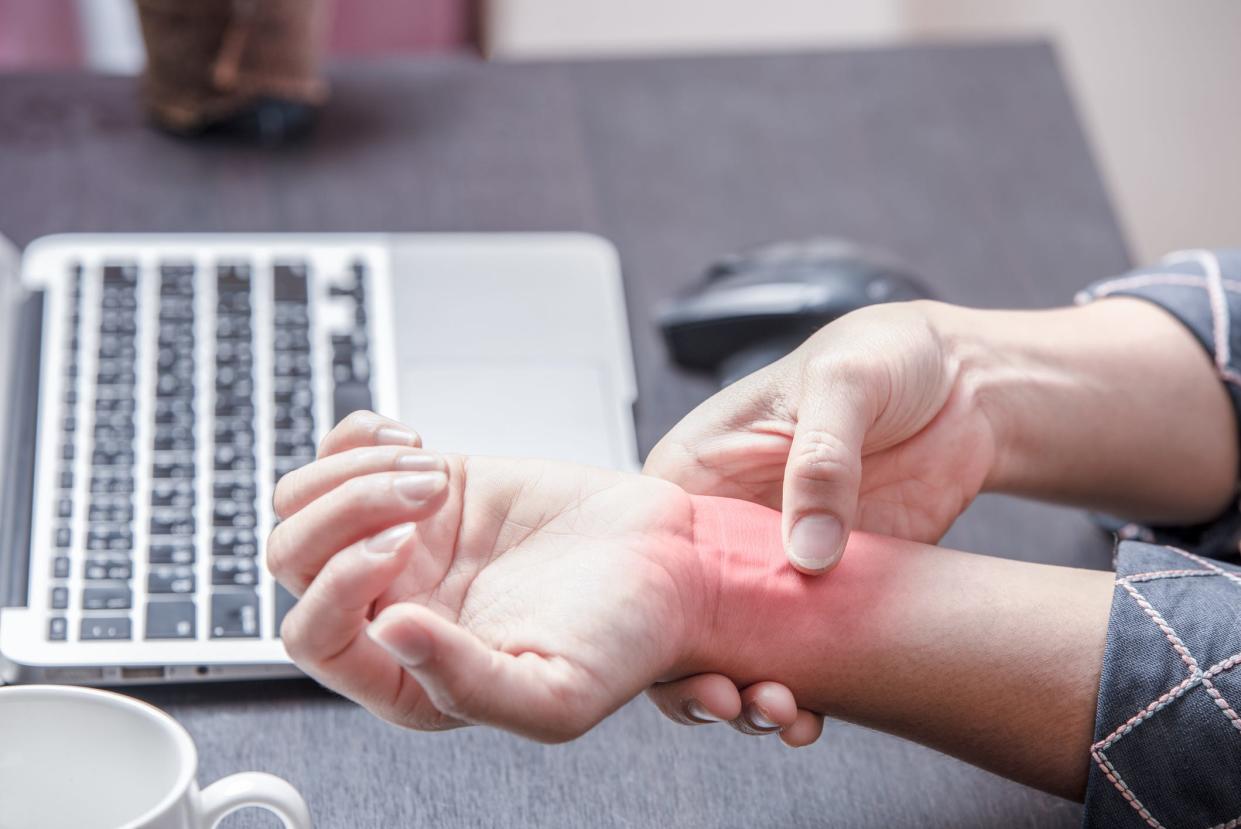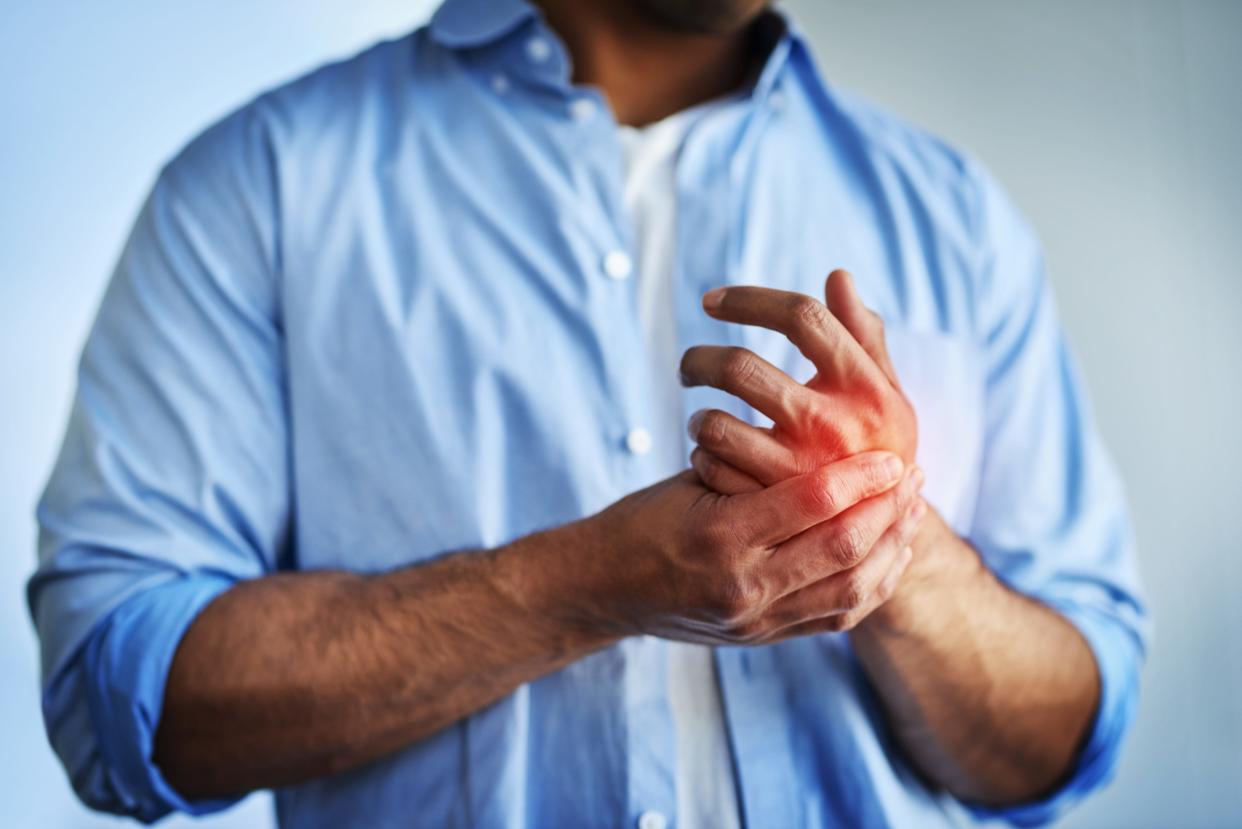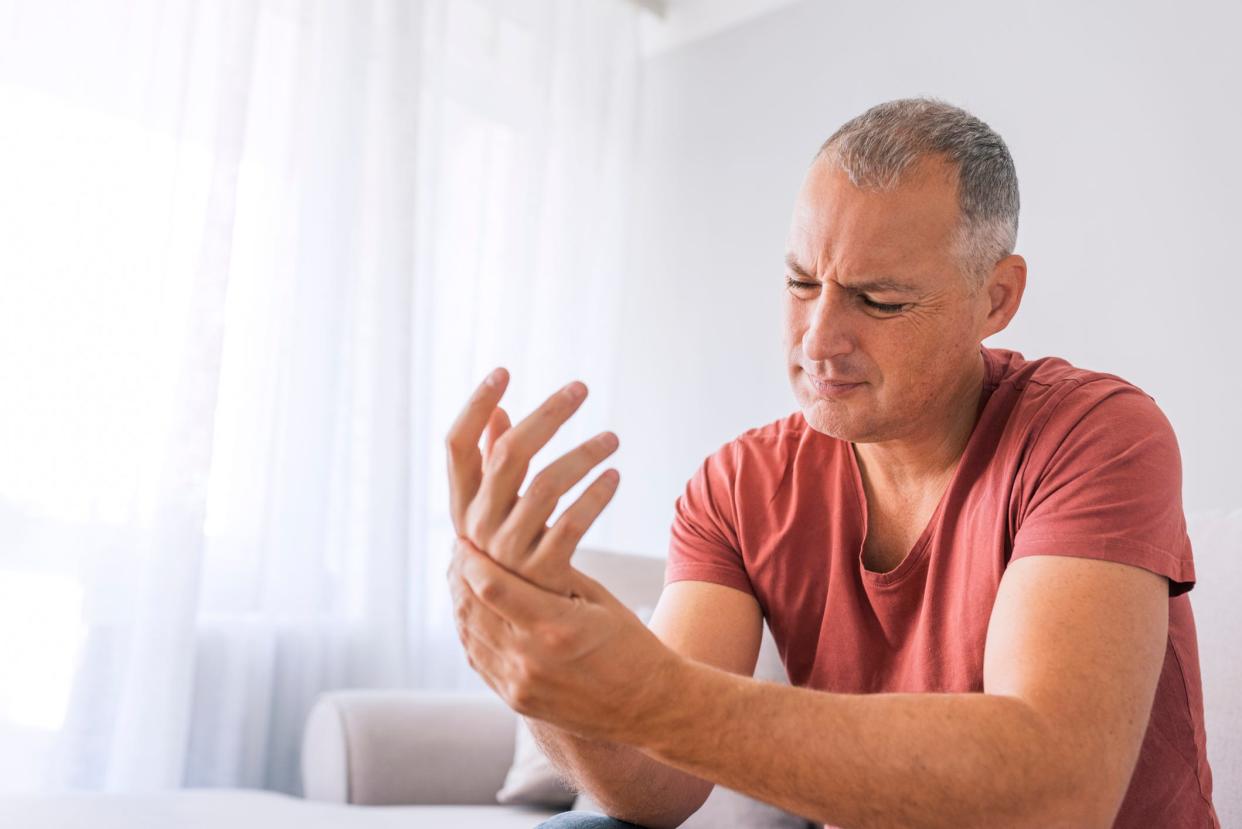What happens to your body when you have carpal tunnel syndrome? Here's what to know

Be careful what you think and say, especially if you downplay the pain and trauma someone else might be experiencing.
I thought I had learned this lesson years ago when I hurt my lower back and dropped immediately to my knees, tears pouring uncontrollably from my eyes. Nothing ever hurt so badly, which greatly surprised me because my prior thinking was, quit whining, the pain can’t be as bad as you make it out to be. I found out the hard way, it’s worse.
Unfortunately, as it turned out, I had more work to do in learning this lesson. This time it has to do with carpal tunnel syndrome, a neurological disorder that occurs when the median nerve, which runs from your forearm into the palm of the hand, becomes squeezed at the wrist. I had heard about it but never gave it much thought. In fact, admittedly I dismissed it as no big deal. How bad could it be, a problem arising from too much typing on a keyboard? The answer is, it can be really bad and now I know firsthand, no pun intended.
One man's journey with carpal tunnel syndrome

Over the years, I have had symptoms that resemble carpal tunnel syndrome. Typically, they came on from yard work, repetitive use of a squeeze bottle, or trimming with hand clippers. Or perhaps I was reliving my boxing youth and putting in too much time and effort punching my heavy bag. But then I’d back off and the symptoms would subside in a few days. Fast forward to late August of this year and I needed to trim back a long row of deeply overgrown evergreen shrubs. I worked many hours a day for several straight days, all by hand, with no power tools. My right hand started bothering me at the end of the first day, but I kept going, needing to get the job done.
Eventually, and inevitably, the symptoms became stronger and I could no longer ignore them. The biggest part of the problem is they came on at night before bedtime. During the day I had some limited symptoms that I could handle, but as I sat reading or watching TV near bedtime the fingers on my right hand would begin to swell to nearly twice their normal size and were stiff and numb. Then things really started to happen with deep tingling, and it felt as if I had shoved my hand into an oven and there was a troll in there with an ice pick pounding away. At times this was accompanied by a dull ache all the way up my forearm to my elbow.
In order to sleep, I took a bunch of Tylenol and Aleve, but they did nothing, so I took more. Still nothing, and I found through trial and error that the only thing I could do was get up and move around and engage my hand in some way as I walked around the house. This helped relieve the pain to a tolerable level, but when I tried to get back to sleep, I was wide awake. Finally, when I fell asleep, the symptoms would come raging back and awaken me. This became the pattern.
Night after night, at best, I was getting about three hours of sleep in bits and pieces. Unfortunately for me, the fall term at Hanover College, where I teach, started soon after this whole thing flared up. This meant crawling out of bed, driving 60 miles to Hanover, teaching, completing a variety of tasks, and then heading home around 7 p.m. Ironically, my hand in a brace would be OK most of the day with some swelling and limited pain until I got home and settled in, then the pain would rage.
It was long past time to do something about this so I called my friend, Preventive Cardiologist Dr. Henry Sadlo, my go-to guy for all things medical. He recommended that I see Dr. Michelle Palazzo, of the Kleinert and Kutz internationally famous hand clinic. He gave her a resounding A+ rating, and later I learned that my two sisters-in-law, Linda and Jackie, agreed as she had worked on their hands with great results.
How can you treat carpal tunnel syndrome?

My treatment began with a cortisone shot that was amazingly helpful. Then I went for a neurodiagnostic exam with Dr. Vasudeva Iyer. This was a great experience as he was aware that I knew something about anatomy and physiology and we spent considerable time going over all my many test results in detail. The punch line was an ultrasound test that clearly showed my median nerve is compressed. This means the nerve that controls muscular activity and also supplies sensory information to my brain about what’s going on in my hand is under great pressure as it passes through the carpal tunnel.
Iyer pointed and gave me a sad smile as the message was clear. Surgery is in my future.
I’ve been back to see Palazzo and am scheduled for her to conduct surgery in December when my term at Hanover ends. Typically, my surgeries in the past were something to dread, but this time I’m looking forward to it. This carpal tunnel experience, with its relentless pain at night, taught me a tough life lesson. So, to all those who are suffering or have suffered from carpal tunnel syndrome, please accept my apology for grossly underestimating the problem and for dismissing it as no big deal.
Reach Bryant Stamford, a professor of kinesiology and integrative physiology at Hanover College, at stamford@hanover.edu.
This article originally appeared on Louisville Courier Journal: What happens to your body when you have carpal tunnel syndrome
